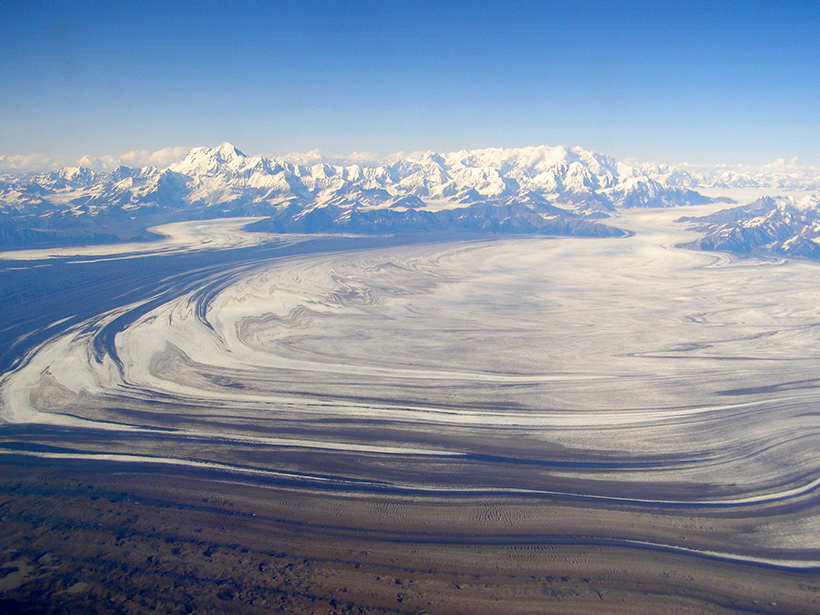Source: Journal of Geophysical Research: Earth Surface
In southeastern Alaska, the ongoing collision between the North American plate and a microplate has uplifted the Saint Elias Mountains, the planet’s tallest coastal range. For millions of years, large glaciers have eroded these mountains and transported their sediment to the Gulf of Alaska. Now Dunn et al. are investigating whether this offshore sediment record can be used to reconstruct the range’s history of uplift and erosion, also known as its exhumation.
As part of the Integrated Ocean Drilling Program’s Expedition 341, which drilled five boreholes in 2013 through sediment deposited along the gulf’s continental shelf, slope, and submarine fans, the team extracted and obtained ages for more than 1600 mineral grains using uranium-lead (U-Pb) and fission track dating techniques. These radiometric dating techniques are based on the decay of uranium into stable lead isotopes (U-Pb dating). The fission decay of uranium-238 causes linear damage zones in the mineral crystal lattice, called fission tracks, which are preserved once the grain cools. Such analysis establishes the grains’ cooling age as a measure of the rock’s motion toward the surface of the Earth due to uplift and erosion. The scientists then compared these findings with the separate onshore exhumation record and new data obtained from the Alsek River, which drains the range’s northern slopes.
The similar ages of mineral grains collected from the shelf, slope, and proximal deep-sea fan cores reveal that not much sediment mixing occurs along this margin and that all three areas received sediment from the same region during the past 1.2 million years. The distal deep-sea fan deposits suggest that the source of the sediment changed between about 3.5 million and 10 million years ago. According to the fission track ages, the range’s exhumation rate was about 1.6 kilometers per million years around 15–12 million years ago (a rate comparable to those proposed for other active convergent margins, including the Himalayas and the European Alps). Then, around 11–8 million years ago, the rate increased to the very rapid pace of 2.8 kilometers per million years. This very rapid rate is similar to those suggested to have occurred over the past 10 million years in the core of the Saint Elias Mountains, indicating an efficient feedback mechanism between tectonics and erosion.
This study demonstrates that fission track dating can be used effectively to unravel the changes in a mountain range’s exhumation history, including both temporal and spatial patterns preserved in a convergent margin’s offshore sediments. Although this range-wide approach provides more complete spatial coverage of the exhumation patterns than is available solely from onshore analyses, the researchers caution that fission track techniques are unable to record variations in exhumation rates if they occurred as recently as or over periods of less than the 2- to 3-million-year lag time between the fission track cooling and deposition ages. (Journal of Geophysical Research: Earth Surface, https://doi/10.1002/2016JF004168, 2017)
—Terri Cook, Freelance Writer
Citation:
Cook, T. (2017), A mountain range’s history preserved in ocean sediments, Eos, 98, https://doi.org/10.1029/2017EO070993. Published on 07 April 2017.
Text © 2017. The authors. CC BY-NC-ND 3.0
Except where otherwise noted, images are subject to copyright. Any reuse without express permission from the copyright owner is prohibited.

